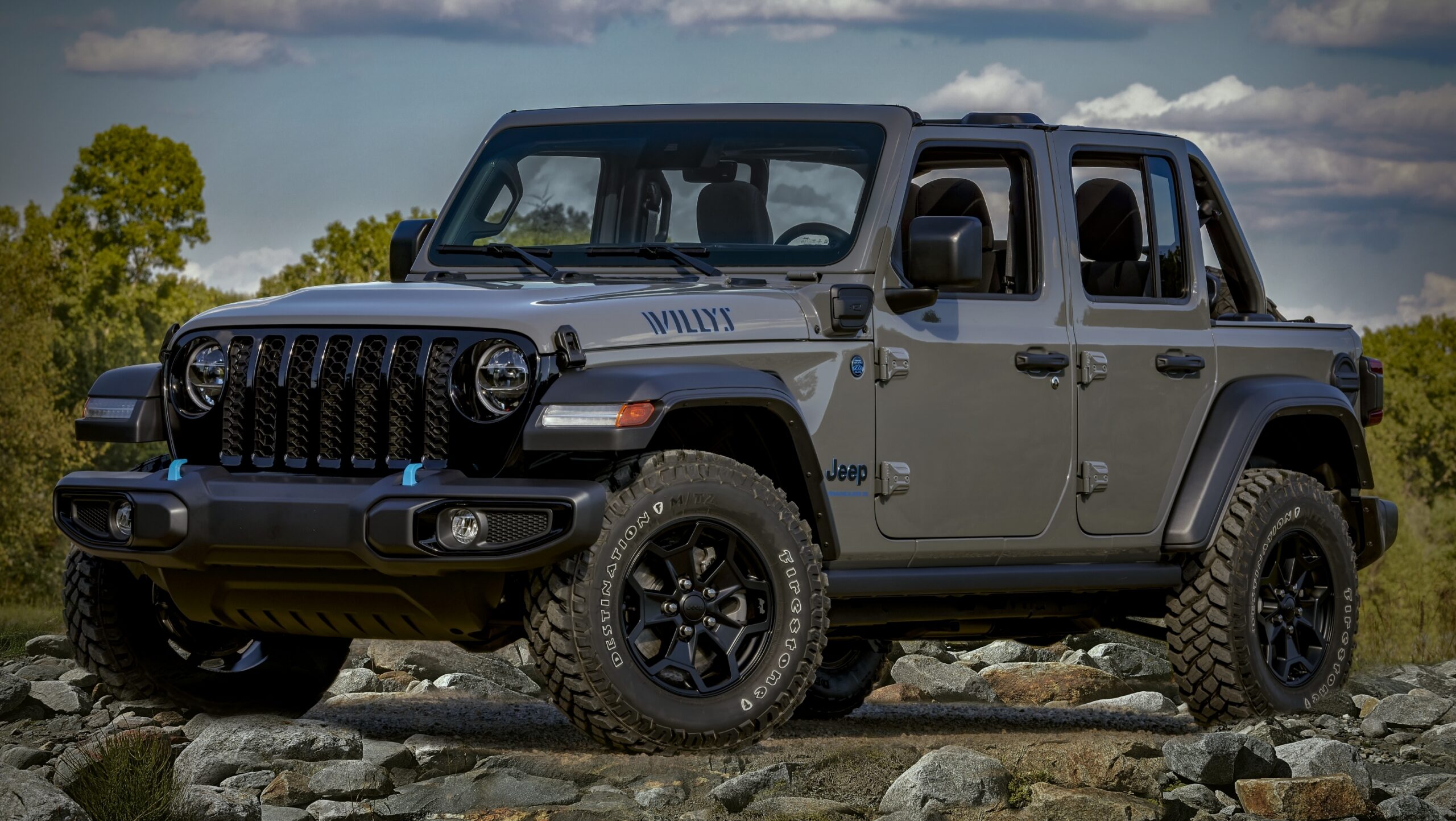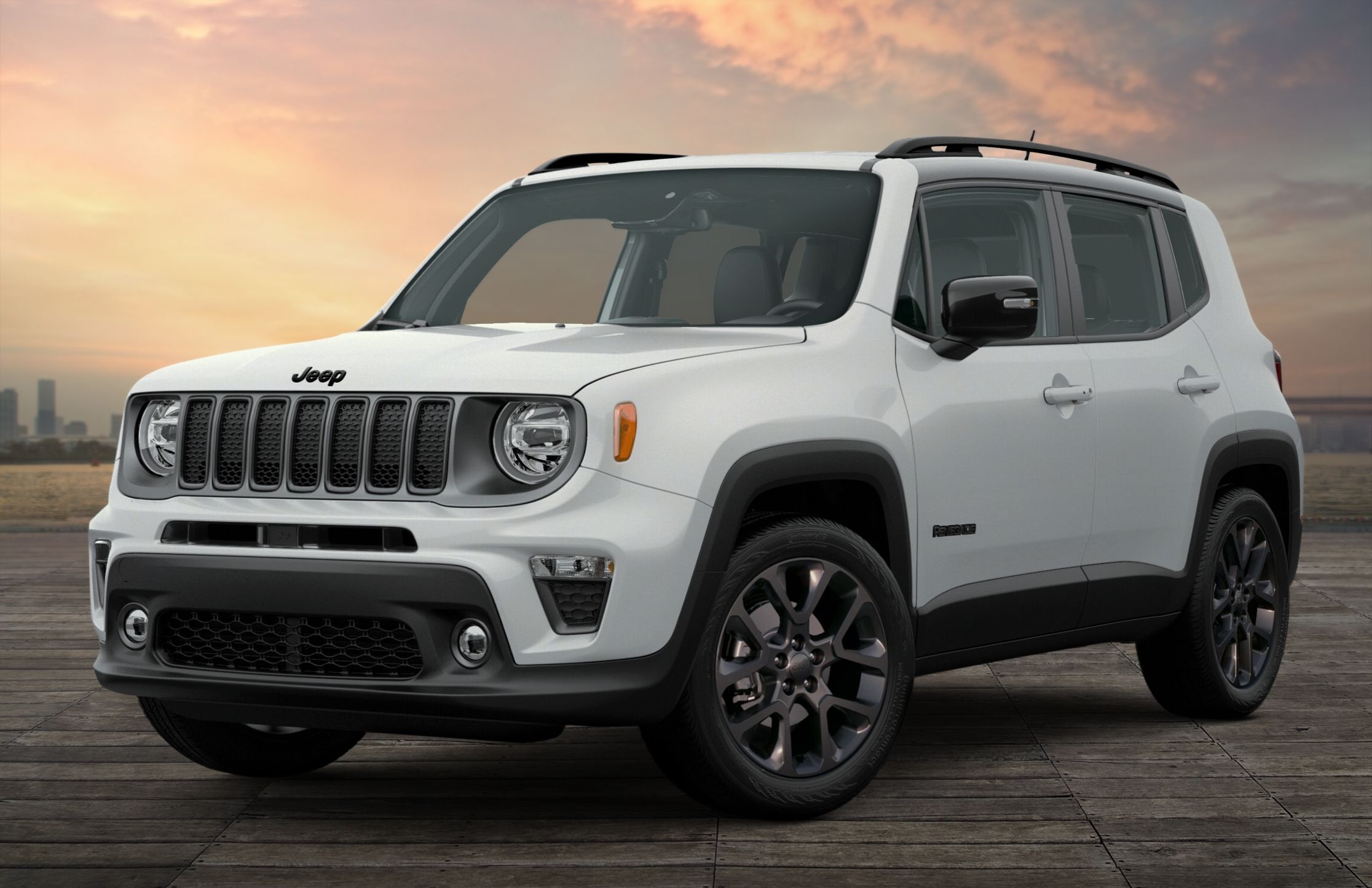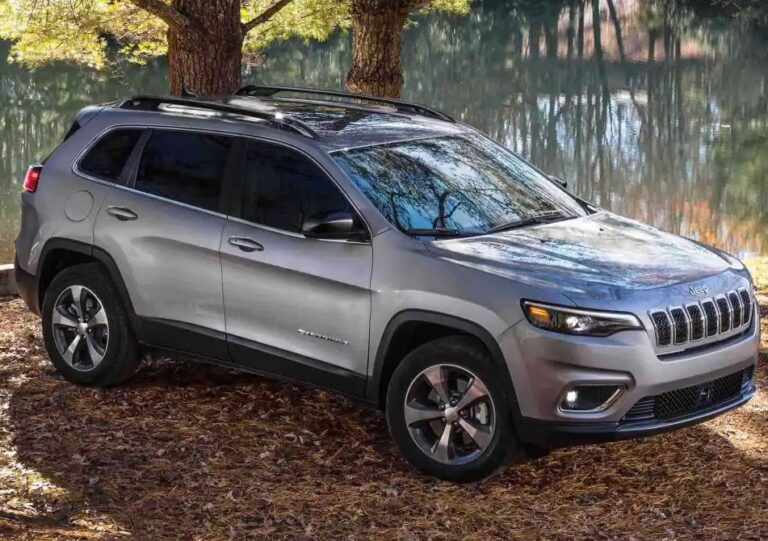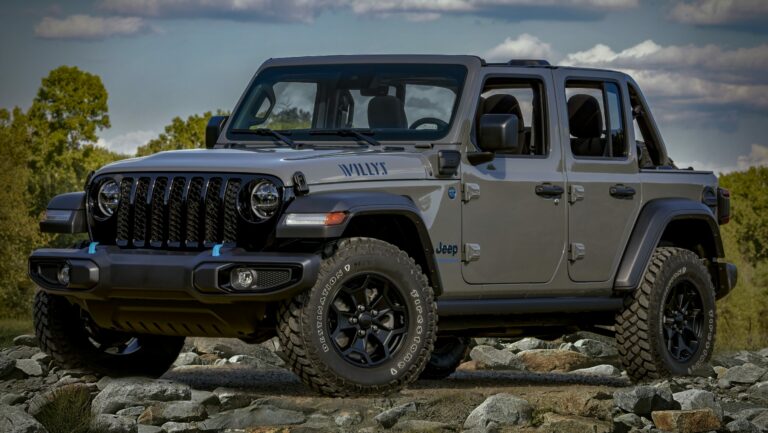Jeep CJ7 Tub For Sale: A Comprehensive Guide to Reviving Your Classic Off-Roader
Jeep CJ7 Tub For Sale: A Comprehensive Guide to Reviving Your Classic Off-Roader jeeps.truckstrend.com
The Jeep CJ7 is more than just a vehicle; it’s an icon, a symbol of freedom, adventure, and rugged American engineering. For enthusiasts and restorers, keeping these beloved machines on the road is a passion project, and often, the most critical component in this endeavor is the Jeep CJ7 tub. Whether your current tub is ravaged by rust, damaged in an accident, or you’re embarking on a full frame-off restoration, finding the right replacement tub is a pivotal step. This article serves as your ultimate guide to understanding, sourcing, and considering everything involved when looking for a Jeep CJ7 tub for sale.
Why Seek a Jeep CJ7 Tub For Sale?
Jeep CJ7 Tub For Sale: A Comprehensive Guide to Reviving Your Classic Off-Roader
The tub, essentially the body of your Jeep CJ7, is the foundation upon which the rest of the vehicle is built. Over decades of use, exposure to the elements, and the rigors of off-roading, the original steel tubs of CJ7s are highly susceptible to rust and structural fatigue. This is particularly true in areas prone to road salt or high humidity. Finding a Jeep CJ7 tub for sale becomes a necessity for several compelling reasons:
- Combating Rust: This is by far the most common reason. Floorboards, hat channels, rocker panels, and rear corners are notorious rust traps. A new or better-conditioned tub eliminates these pervasive issues.
- Repairing Accident Damage: Collisions, even minor ones, can warp or damage the tub beyond economical repair, necessitating a full replacement.
- Full Restoration Projects: For those aiming for a show-quality restoration, starting with a pristine tub (or a new aftermarket one) provides the best foundation.
- Custom Builds and Modifications: A fresh tub offers a clean slate for custom fabrication, roll cage integration, or unique body modifications.
- Preservation of a Classic: Replacing a severely compromised tub ensures the longevity and structural integrity of these cherished classic Jeeps, keeping their legacy alive for future generations.

Types of Jeep CJ7 Tubs Available
When you begin your search for a Jeep CJ7 tub for sale, you’ll discover a few distinct categories, each with its own set of advantages and disadvantages. Understanding these options is crucial for making an informed decision that aligns with your budget, restoration goals, and desired level of authenticity.
1. Original/Used CJ7 Tubs
These are tubs salvaged from other CJ7s. They represent the most authentic option, as they are original factory components.
- Pros:
- Authenticity: They are genuine Jeep parts, ideal for purists aiming for an original restoration.
- Potentially Lower Upfront Cost: A used tub might be cheaper than a new aftermarket one, depending on its condition.
- VIN Tag Transfer: In some cases, if the original VIN tag is still attached and legally transferred, it can simplify registration.
- Cons:
- Condition Varies Wildly: Most used tubs will have some degree of rust, dents, or previous repairs. Thorough inspection is paramount.
- Hidden Damage: Rust can be extensive and hidden beneath paint or undercoating.
- Scarcity: Finding a truly rust-free, straight original tub is becoming increasingly difficult.
- Additional Work: Expect to perform rust repair, bodywork, and painting, which can quickly add to the overall cost and effort.
- Where to Find: Salvage yards, online marketplaces (eBay, Craigslist, Facebook Marketplace), dedicated Jeep forums, and classic car classifieds.
2. Aftermarket Steel Tubs
These are brand-new reproductions made from steel, often thicker gauge than the original factory tubs. They are designed to be direct replacements.
- Pros:
- Brand New, No Rust: The primary advantage – you start with a clean, rust-free slate.
- Improved Durability: Many aftermarket tubs use thicker gauge steel, making them more robust than the originals.
- Pre-Drilled Holes: Most come with pre-drilled holes for factory components, simplifying assembly.
- Ready for Paint: Typically come E-coated or primered, ready for final bodywork and paint.
- Cons:
- Higher Cost: Significantly more expensive than most used tubs.
- Minor Fitment Issues: While designed as direct replacements, minor adjustments (drilling, trimming) might be necessary.
- Not "Original": Some purists prefer original parts, even if they require more work.
- Reputable Manufacturers: Omix-ADA, Crown Automotive, MD Juan, Quadratec.
3. Aftermarket Fiberglass Tubs
Constructed from fiberglass, these tubs offer a lightweight and rust-proof alternative to steel.
- Pros:
- Rust-Proof: Fiberglass doesn’t rust, making it ideal for wet climates or off-roaders.
- Lightweight: Reduces overall vehicle weight, potentially improving performance and fuel efficiency.
- Smooth Finish: Often have a smoother, more consistent surface, potentially requiring less bodywork before paint.
- Easier to Repair: Minor cracks or damage can often be repaired with fiberglass kits.
- Cons:
- Impact Resistance: Can be more brittle than steel in heavy impacts, potentially cracking rather than denting.
- Flex: Some fiberglass tubs can exhibit more flex than steel, which might affect door alignment or the feel of the ride.
- "Not Original" Feel: Purists may object to the non-metallic feel and sound.
- UV Degradation: If not properly painted and maintained, fiberglass can degrade from UV exposure over time.
- Reputable Manufacturers: Kentrol, Cobra Fiberglass.
Key Considerations Before Purchasing a CJ7 Tub
Before you commit to a Jeep CJ7 tub for sale, take the time to thoroughly evaluate your options based on these critical factors:
- Condition (for Used Tubs): This cannot be stressed enough. Inspect every square inch for rust, especially in common problem areas like floorboards, hat channels (the structural supports underneath the floor), rocker panels, rear corners, and the cowl area where the windshield attaches. Look for previous patches or bondo that might hide deeper issues.
- Material Choice: Steel vs. Fiberglass vs. Original. Your decision here hinges on your priorities: authenticity, rust prevention, weight savings, or budget.
- Budget: New aftermarket steel or fiberglass tubs represent a significant investment. Factor in not just the purchase price but also shipping, paint, and any potential unforeseen costs for bodywork or fitment.
- Shipping and Logistics: Tubs are large and heavy. Shipping costs can be substantial, often hundreds of dollars, and require freight services. Local pickup can save a lot of money and allow for a personal inspection. Plan how you will transport it.
- Manufacturer Reputation (for New Tubs): Research the brand. Read reviews, check forums, and ask about warranties. A reputable manufacturer will offer a better-fitting and higher-quality product.
- Completeness: Does the tub come with the firewall, inner fenders, or any other attached components? While most new tubs are "bare," some used ones might come with more parts, which could be a bonus or a source of additional rust.
- VIN Tag Transfer: If you are replacing a rusted tub, you’ll need to legally transfer the VIN number from your old tub to the new one. This process varies by state and can be complex. Consult your local DMV. New aftermarket tubs usually do not come with VINs.
The Buying Process: A Step-by-Step Guide
Once you’ve decided on the type of tub you need, follow these steps to navigate the purchasing process:
- Define Your Needs and Budget: Be clear about whether you want a full restoration, a simple rust repair, or a custom build. Set a realistic budget for the tub itself, shipping, and subsequent work.
- Research and Compare: Look at various sellers and manufacturers. Compare prices, features, and reviews for both new and used tubs.
- Locate Sellers: Utilize online marketplaces (eBay, Craigslist), specialized Jeep parts dealers (Quadratec, Morris 4×4 Center), manufacturer websites, and dedicated Jeep forums or Facebook groups.
- Thorough Inspection (for Used Tubs):
- In Person: If possible, always inspect a used tub in person. Bring a flashlight and a magnet (to detect bondo).
- Remote Inspection: If buying remotely, request a multitude of high-resolution photos from every angle, including close-ups of common rust spots. Ask for videos.
- Ask Detailed Questions: Inquire about the tub’s history, previous repairs, and why it’s being sold.
- Confirm What’s Included: Ensure you know exactly what components come with the tub (e.g., firewall, dash support, inner fenders, body mounts).
- Negotiate Price: Especially for used tubs, there’s often room for negotiation.
- Arrange Shipping or Pickup: Coordinate logistics well in advance. For freight shipping, ensure you have a way to unload the tub upon arrival (forklift, multiple strong people).
- Secure Payment: Use secure payment methods. For local pickups, cash is common. For online purchases, consider PayPal Goods & Services for buyer protection.
Installation Tips and Potential Challenges
Replacing a CJ7 tub is a significant undertaking, often requiring mechanical aptitude and patience. While it can be a DIY project, some aspects might warrant professional assistance.
Installation Tips:
- Document Everything: Take countless photos and videos during disassembly. This will be invaluable during reassembly.
- Label and Organize: Bag and label every bolt, wire, and component as you remove it.
- Inspect the Frame: With the old tub off, thoroughly inspect your CJ7’s frame for rust, cracks, or damage. Now is the ideal time for frame repairs or reinforcement.
- Replace Body Mounts: Always install new body mounts (rubber or polyurethane) when putting on a new tub. This ensures proper alignment and reduces vibration.
- Test Fit Components: Before final paint and assembly, do a dry fit of doors, windshield frame, and other major components to check for alignment and make any necessary adjustments.
- Primer and Paint: It’s often easiest to prime and paint the tub (inside and out) before fully assembling all the smaller components.
- Take Your Time: Rushing leads to mistakes. Be patient and meticulous.
Potential Challenges and Solutions:
- Seized Bolts: Expect rusted and seized bolts, especially body mount bolts. Have penetrating oil, a torch, and strong impact tools ready.
- Misaligned Holes: Even with new aftermarket tubs, some holes for accessories or mounting points might not perfectly align. A drill and patience are your friends.
- Wiring Harness Rerouting: The main wiring harness often runs through the tub. Ensure it’s properly routed and protected from pinching or abrasion.
- Unexpected Rust on Frame/Components: Once the tub is off, you might discover more rust on the frame or other components than anticipated. Factor this into your budget and timeline.
- Door Fitment: Getting doors to fit perfectly can be challenging. Adjusting hinges and body mounts is often necessary.
Jeep CJ7 Tub For Sale: Estimated Price Guide
The price of a Jeep CJ7 tub can vary significantly based on its type, condition, manufacturer, and market demand. This table provides a general estimate for tubs found in the current market.
| Tub Type | Condition/Description | Estimated Price Range (USD) | Key Considerations |
|---|---|---|---|
| Used Original Steel | Fair/Significant Rust (Needs extensive repair) | $300 – $800 | High risk, major bodywork/welding needed, shipping. |
| Used Original Steel | Good/Minor Rust (Salvageable, minor repairs) | $800 – $1,800 | Better starting point, still needs work. |
| Used Original Steel | Excellent/Minimal Rust (Rare find) | $1,800 – $3,000+ | Highly sought after, usually from dry climates. |
| Aftermarket Steel | Basic E-coated (e.g., MD Juan, Crown) | $3,000 – $4,500 | New, rust-free, ready for prep & paint, shipping. |
| Aftermarket Steel | Premium/Thicker Gauge (e.g., Omix-ADA, Quadratec) | $4,500 – $6,500+ | Higher quality, better fitment, durable, shipping. |
| Aftermarket Fiberglass | Basic Primered (e.g., Kentrol, Cobra) | $2,800 – $4,000 | Lightweight, rust-proof, can be brittle, shipping. |
| Aftermarket Fiberglass | Premium/Enhanced (e.g., Thicker layup, specific features) | $4,000 – $5,500+ | Better quality fiberglass, potentially better fit. |
Note: Prices are estimates and do not include shipping, which can add $300-$1000+ depending on distance and carrier. Installation costs (if professionally done) are also separate.
Frequently Asked Questions (FAQ)
Q1: How long does a CJ7 tub replacement typically take?
A1: A full tub replacement, including disassembly, frame prep, tub installation, and reassembly of all components, can take anywhere from 80 to 200+ hours, depending on your skill level, the condition of the donor parts, and unexpected issues.
Q2: Do I need special tools to replace a CJ7 tub?
A2: While basic hand tools are essential, a tub replacement benefits greatly from a good set of sockets, wrenches, an impact gun, a hoist or engine crane (to lift the tub), penetrating oil, and potentially a grinder or cutting tools for seized bolts.
Q3: Can I replace the tub myself, or do I need professional help?
A3: A tub replacement is a significant DIY project. If you have mechanical experience, patience, and the necessary tools, it’s certainly achievable. However, if you’re unsure or encounter complex issues like frame repair or significant wiring challenges, professional help is advisable.
Q4: What about the VIN number when replacing a tub?
A4: The VIN number is legally tied to the vehicle’s frame, not typically the tub itself. However, many states require the VIN tag from the original tub to be transferred to the new tub for legal registration. Check your local DMV’s specific requirements before proceeding.
Q5: Are fiberglass tubs as good as steel?
A5: "Good" is subjective. Fiberglass tubs are excellent for rust prevention and weight savings. However, steel tubs are generally stronger in impacts and offer the authentic feel. The best choice depends on your priorities: off-roading durability vs. rust-free longevity.
Q6: Where is the best place to find a Jeep CJ7 tub for sale?
A6: For new tubs, reputable online Jeep parts retailers (Quadratec, Morris 4×4 Center) and direct from manufacturers (Omix-ADA, MD Juan, Kentrol) are best. For used tubs, check local salvage yards, Craigslist, Facebook Marketplace, and dedicated Jeep forums or classifieds.
Q7: What other parts will I likely need to buy along with a new tub?
A7: You will almost certainly need a new body mount kit (bushings, washers, bolts), new hardware for reattaching components, and potentially new wiring harnesses, fuel lines, or brake lines if your old ones are corroded. It’s also a good time to consider new interior components like carpet or seats.
Conclusion
The search for a Jeep CJ7 tub for sale is more than just a transaction; it’s an investment in the future of a classic. Whether you opt for the authenticity of a used original, the durability of new steel, or the rust-proof nature of fiberglass, each option brings its own set of considerations. By thoroughly researching, inspecting, and planning, you can acquire the perfect foundation for your beloved CJ7. A new or refurbished tub doesn’t just replace a worn-out part; it breathes new life into an icon, ensuring that the spirit of adventure embodied by the Jeep CJ7 continues to conquer trails and turn heads for years to come. Your patience and meticulous effort will be rewarded with a vehicle that is not only functional but truly a labor of love.




